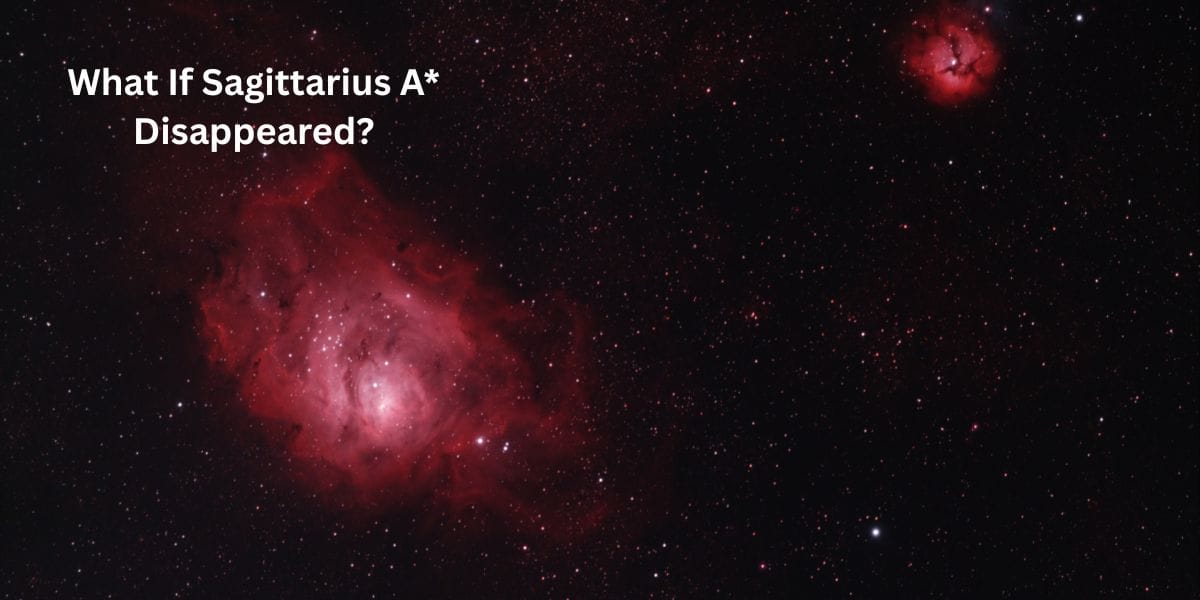Have you ever looked up at the night sky and wondered about the mysteries of space? Our galaxy, the Milky Way, holds a giant secret at its center—a supermassive black hole called Sagittarius A* (pronounced “Sagittarius A-star”). This invisible monster is millions of times heavier than our Sun, silently pulling stars and gas toward it.
But what if one day, Sagittarius A* suddenly vanished? Would our galaxy fall apart? Would Earth be in danger? Black holes are strange and powerful, and their disappearance could change everything. Let’s explore what might happen if our galaxy’s heart suddenly disappeared!
What Is Sagittarius A*?
Sagittarius A* is the supermassive black hole at the center of the Milky Way. It’s like the invisible boss of our galaxy, keeping everything in place with its strong gravity.
- Size: About 4 million times heavier than the Sun.
- Location: Roughly 26,000 light-years away from Earth.
- Behavior: It doesn’t “eat” everything—it mostly sits quietly, but sometimes pulls in gas and dust.
Black holes don’t let light escape, so we can’t see them directly. Scientists detect them by watching how stars and gas move around them. Without Sagittarius A*, our galaxy would be very different!
What Keeps a Galaxy Together?
A galaxy is like a giant spinning disk of stars, gas, and planets. Gravity is the glue that holds everything together.
- Stars orbit the center just like planets orbit the Sun.
- Supermassive black holes (like Sagittarius A*) help control this motion.
- Without a central black hole, stars might drift away or change their paths.
Think of a merry-go-round. If the center pole disappears, the ride would wobble and break apart. Similarly, Sagittarius A* helps keep the Milky Way stable.
What Would Happen If Sagittarius A Vanished?*
If Sagittarius A* suddenly disappeared, the effects wouldn’t be instant—but over time, things would get weird!
Stars Would Change Their Paths
- Stars near the center would stop circling and move in straight lines.
- Some might drift away, while others could crash into each other.
The Milky Way Could Lose Its Shape
- Without a strong center, the galaxy might stretch out or become messy.
- New stars might not form as easily.
Earth Would Probably Be Safe
- We’re very far from the center (26,000 light-years), so we wouldn’t feel immediate effects.
- However, long-term changes in the galaxy could affect future star systems.
Can a Black Hole Really Disappear?
Black holes don’t just vanish—but scientists have a theory called Hawking Radiation that says tiny black holes can slowly fade away.
- Small black holes could evaporate over billions of years.
- Supermassive black holes (like Sagittarius A*) would take much longer—possibly trillions of years!
- Right now, there’s no known way for a black hole to disappear suddenly.
So, Sagittarius A* isn’t going anywhere soon!
Could Another Black Hole Replace Sagittarius A*?
If Sagittarius A* disappeared, could another black hole take its place? Maybe!
- Galaxies sometimes merge, bringing their own black holes together.
- A new black hole could settle in the center over millions of years.
- But until then, the Milky Way would be unstable.
What Would Happen to Other Galaxies Without Black Holes?
Scientists believe most big galaxies have a supermassive black hole at their center.
- Without one, galaxies might not form properly.
- Black holes help control star formation and galaxy growth.
- A missing black hole could turn a galaxy into a chaotic mess!
The Galaxy Needs Its Black Hole!
Sagittarius A* might seem scary, but it’s actually important for our galaxy. Without it, the Milky Way could slowly change, stars might wander off, and new solar systems might not form correctly.
The good news? Black holes don’t just disappear—so Sagittarius A* isn’t going anywhere! Still, it’s fun to imagine what would happen if our galaxy’s invisible giant suddenly vanished.
📌 Frequently Asked Questions
How big is Sagittarius A*?
Sagittarius A* is about 4 million times heavier than the Sun but squeezed into a tiny space.
Can we see Sagittarius A from Earth?
No, black holes are invisible, but scientists detect them by watching stars move around them.
Will Sagittarius A ever explode?*
No, black holes don’t explode. They can only fade away extremely slowly (over trillions of years).
What would happen if two black holes collided?
They would merge into one bigger black hole, sending out powerful gravitational waves.
Is Earth in danger from Sagittarius A*?
No, we’re too far away. Its gravity doesn’t affect us.
How do black holes form?
Big stars collapse at the end of their life, while supermassive black holes grow over billions of years
Can a black hole die?
Yes, but only very slowly through Hawking Radiation—it would take trillions of years.
What’s inside a black hole?
We don’t know! The center (singularity) breaks physics as we know it.
Could a black hole swallow the whole galaxy?
No, black holes only pull in things that get too close. The Milky Way is safe!
Are there other black holes in the Milky Way?
Yes! Scientists think there could be millions of smaller black holes in our galaxy.

You Might Also Like
Black Hole ‘Burps’: What Did It Just Spit Out?
New Theory: Are Black Holes Hiding Dark Matter?
Are There Stars Bigger Than UY Scuti?
Why Is Polaris So Important for Navigation?